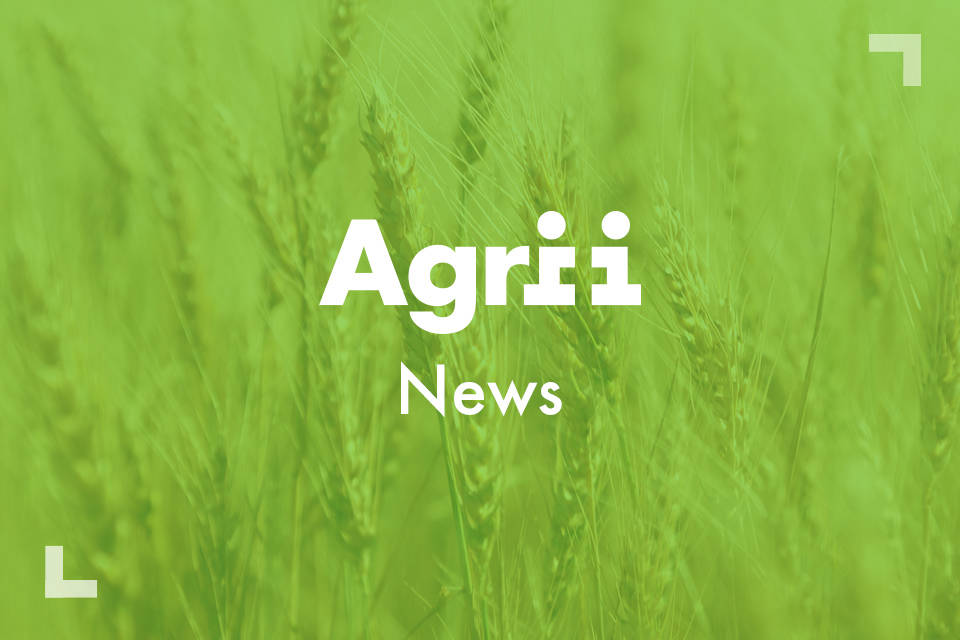SFI integrated pest management
This content was published in good faith on 10th November 2024. While we strive to keep our information accurate and current, agricultural practices and recommendations may evolve. For the latest guidance and advice tailored to your specific needs, please contact your local Agrii representative.
The Sustainable Farming Incentive (SFI) scheme has several actions dedicated to Integrated Pest Management (IPM) to encourage farmers to take a more environmentally-friendly approach to managing crop pests. The idea is to encourage you to use fewer chemicals which can have detrimental impacts on non-target flora and fauna, as well as on the wider environment.
The actions specifically aim to increase grower knowledge of IPM, helping you to identify opportunities to integrate this approach into your system. They are also aimed at creating habitats for natural crop pest predators, using companion cropping to suppress weeds, reduce diseases, and provide protection from crop pests, and to minimise the use of insecticides.
But what exactly is a IPM and what does the SFI scheme actually pay farmers and growers to do? In this article, we find out.

Approach Us
We’re here to help your business ambitions. See how we could work together, we’d love to hear from you.
Let's TalkWhat is Integrated Pest Management (IPM)?
IPM is a sustainable method of managing crop pests, weeds, and diseases which favours natural predators and techniques like companion cropping over the use of chemicals.
It represents a holistic approach to crop management that combines a number of tools to produce healthy crops while minimising the economic, health, and environmental risks of conventional crop pest management.
These tools are:
- Biological
The use of natural enemies of crop pests to reduce their numbers and the damage done to crops.
- Physical
Physical pest management tries to ensure pest are kept away from crops, or sources of food and water are removed so they have to go elsewhere.
- Cultural
A cultural approach to pest management refers to using crop husbandry best practice.
- Chemical
Using chemicals to control weeds and crop pests is, of course, normal practice. But under an IPM system, chemicals are only used as a last resort.
Benefits of integrated pest management
Exponents of IPM note many benefits of the approach. First of all, it reduces the reliance on pesticides which has a multitude of advantages. It saves money and reduces the risk of pesticide resistance. It also reduces the risk of pesticides drift beyond the target area, reducing the impact of chemicals on the environment.
IPM also increases your crop and weed management options as more chemicals are removed, and enables you to focus more on the root causes of pests and disease rather than just treating the outcomes.
Other benefits of IPM include improved soil health which produces healthier plants better able to withstand pests, disease, and adverse weather, the promotion of better crop husbandry such as optimal field hygiene, reduced pesticide residues in food, better understanding of pest populations, and ultimately a much more environmentally sustainable way to produce profitable cash crops.
Integrated Pest Management and SFI – what you need to know
Most farmers and growers will know by now that the SFI scheme is based on specific actions that promote sustainable, nature and environment-friendly farming practices, while trying to retain food security.
So, what SFI actions are available for IPM and what do you have to do to access the funding? And crucially, how much will you get paid if you choose to implement them?
Under the 2023 SFI scheme, there were four actions that involved IPM, helpfully called IPM 1-4 and covered a range of activities. In 2024, these actions were updated to produce actions CIPM 1-4 (C is the prefix used to denote a 2024 action rather than an action from the original 2023 scheme) which are based on very similar lines to the original.
2023 IPM actions
IPM1
IPM1 is entitled ‘assess integrated pest management and produce a plan’ and does exactly what is says on the tin … it pays a one off sum of £1,129 for you to assess the potential for IPM on your farm and to produce a plan on how to implement it.
The aim of this action is that you better understand the costs, impacts, and risks of your current approach to crop pest, weed and disease management, and that you can plan how to replace these with a range of IPM methods appropriate to your farm.
IPM1 is available to all agricultural land below the moorland line and is what is called an ‘agreement level’ SFI action. This means that you don’t enter specific areas of land into the action, it is farm-wide, and once included in your SFI agreement, you cannot apply for it again until the three-year agreement ends.
To qualify for the funding, your assessment must be carried out by a member of the BASiS Professional Register qualified with the relevant BASiS Certificate in Crop Protection.
As with all SFI actions, you must keep evidence of having done them. This would include the IPM plan you create and evidence of the BASiS Professional you worked with.
IPM2
IPM2 is payment in exchange for creating flower-rich grass margins, blocks, or in-field strips to encourage natural crop pest predators as well as providing habitat and foraging sites for invertebrates, pollinators, butterflies, hoverflies, and birds.
The action has a duration of three years, is rotational (meaning it can be done in different areas of your farm on successive years) and pays £798 per hectare per year.
Eligible land for IPM2 includes arable land, including temporary grassland, and permanent horticultural and non-horticultural crops.
To access the funding, you must establish and maintain flower-rich grass margins, blocks or in-field strips on land entered into this action.
You must also sow a seed mix containing at least:
- Four grass species, which must not include ryegrass, with the grass component not exceeding 90% of the total seed mix by weight
- 10 wildflower species, with no individual flower species exceeding 25% of the total wildflower species component by weight.
Once established, you cannot:
- Cut or graze them with livestock in a way that means this action’s aim cannot reasonably be expected to be achieved
- Mechanically apply any fertilisers and manures
- Use pesticides, except for herbicides to weed wipe or spot treat for the control of injurious weeds, invasive non-native species, nettles or bracken.
If you rotate this action around your farm, you must do it each year for a period of time that could reasonably be expected to achieve this action’s aim.
IPM3
IPM3 provides funding for establishing a companion crop on arable and horticultural land to act as a trap crop for pests and to suppress weeds, to provide habitat for birds, invertebrates, pollinators and natural predators of crop pests, to help manage nutrient efficiency, and to protect the soil and improve its condition.
It is a three-year rotational action that pays £55 per hectare per year. As with IPM2, eligible land includes arable land, including temporary grassland, and permanent horticultural and non-horticultural crops.
To access the funding, you can establish the companion crop in several ways, including:
- Trap cropping – sowing a trap crop to attract crop pests away from the main arable or horticultural crop
- Inter-cropping – sowing the companion crop with the main arable or horticultural crop
- Undersowing – sowing a companion crop to form a living mulch beneath the arable or horticultural crop.
There are some stipulations with IPM3, such as you cannot use deep-rooted species of companion crops on any area within a land parcel that contains historic or archaeological features, and on areas of peaty soil, legumes should be avoided because they can damage the soil.
Evidence to demonstrate you have undertaken this action can include photographs and other documentation, and field operations at a land parcel level with associated invoices.
IPM4
IPM4 pays farmers not to use insecticides on arable and permanent crops. It is a rotational action that pays £45 per hectare per year for three years, and aims to:
- Support an IPM approach by managing crop pests in a more sustainable way
- Improve local water and air quality
- Increase biodiversity.
Eligible land for IPM4 includes arable land, including temporary grassland, and permanent horticultural and non-horticultural crops.
To access the funding, you must not apply any plant protection products, including seed dressings containing insecticide, on land entered into this action.
For the purposes of this action, insecticide includes nematicides and acaricides. You can apply other plant protection products such as herbicides, fungicides or plant growth regulators, but not insecticides.
Evidence to demonstrate you have undertaken this action can include photographs and other documentation, and field operations at a land parcel level with associated invoices.
2024 updates to the IPM SFI actions
In the 2024 updated SFI scheme, four new actions were released in relation to IPM. These are CIPM1, CIPM2, CIPM3, and CIPM4.
However, with a few exceptions, they are essentially exactly the same as the 2023 actions. They pay the same sums of money for the same activities.
They also share the same names, including:
- CIPM1 – assess integrated pest management and produce a plan
- CIPM2 – flower-rich grass margins, blocks, or in-field strips
- CIPM3 – companion crop on arable or horticultural land
- CIPM4 – no use of insecticide on arable crops or permanent crops.
Some nominal changes have been made, however. CIPM2 has become an limited area action. This means it can be done on no more than 25% of your farm, which was a 2024 change made to protect food security.
CIPM1 is also an exempt action. That means it can be carried out on SSSI land without requiring extra consents.
Other than this, the 2024 IPM actions are identical to the 2023 versions.
Summary
An integrated pest management approach is all about finding environmentally-friendly, sustainable ways to manage crop pests.
So important is this as a way of limiting limit chemical use, restoring habitats and biodiversity, and reducing environmental pollution, that simply creating an IPM plan attracts a payment of more than £1,000.
Significant extra funding can be unlocked by implementing that plan under the SFI scheme, making it well worth considering for any farmer who grows crops.
If you would like help to carry out an IPM assessment or advice on other aspects of the IPM, visit our hub or contact a member of the Environmental Services team.

Agrii Environmental Services
Download the Brochure
The Agrii Sustainable Farming Incentive Knowledge Hub

SFI Arable Options

SFI Soil health

SFI Precision Agriculture

SFI Integrated Pest Management (IPM)

SFI Direct Drilling

SFI No Till

SFI SAM1 - Soil Management Plans

SFI Hedgerows

SFI Herbal Leys

SFI Companion Cropping

SFI Cover Crops

SFI Winter Bird Food

SFI Nitrogen Fixing

SFI Grassland Options

SFI improved grassland management

SFI Vineyard Cover Cropping

SFI Species Rich Grassland
Featured News
News - 17/06/25
Half of OSR area underwritten by establishment schemes
News - 27/05/25
Honouring Marek Nowakowski: A Day at Buckingham Palace
News - 01/05/25
Reducing the environmental impact of maize
News - 17/03/25
Agrii Partners with RapidAIM to Revolutionise Codling Moth Management in UK Apple Orchards
News - 07/03/25
Shining a Spotlight on Women in Agriculture




